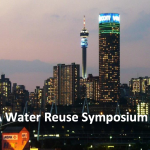Considering the “Day Zero” scenario that gripped the City of Cape Town last year, many commercial companies have installed on-site water treatment plants to ensure sustainable supply of water to continue with business. They are required to register as Water Services Intermediaries (WSI) with the City of Cape Town and comply with relevant legal requirements as per the National Water Act and the City’s bylaws. The City conducts routine inspections to ensure compliance against the conditions outlined in the WSI agreement.
One of fundamental requirements outlined in the WSI agreement is compliance with the National Drinking Water Standard SANS 241-1. Section 1.3 of Part 2 SANS 241-1 outlines the requirements for implementation of risk management principles as per the Water Safety Planning concept of the World Health Organisation and Blue Drop Requirements (DWS):
a) Water quality risk assessment – assessment of risk from catchment to consumer;
b) Water Quality monitoring – risk based operational and compliance monitoring programs;
c) Response monitoring – incident management and monitoring when limits are exceeded;
d) Verification of water quality – calculation of compliance;
e) Water Safety Plan – comprehensive water quality risk management systems.
The methodology of the Water Safety Plan is provided in the Water Safety Planning Manual of the World Health Organisation (link below), and the Blue Drop requirements.
http://www.who.int/water_sanitation_health/publications/publication_9789241562638/en/
The Water Safety Planning procedure is based on the universal risk-management process of “Plan, Do, Check and Act” used in all other spheres of business. Water Safety Planning methodology goes one step further in outlining all aspects of risk management which can be applied to other infrastructure including the following:
- Team composition for risk assessment to ensure unbiased risk identification and risk prioritisation,
- Monitoring of critical control points to provide evidence of mitigation measures,
- Validation of efficacy of mitigating measures to ensure the correct actions were undertaken to reduce risk,
- Root cause analysis based on constant validation and re-assessment of risks,
- Linking risks to specific alert levels with associated actions in an incident protocol for each WSI.
Therefore, alignment of the water quality risk assessment with the WSI’s internal risk-management processes makes logical sense as it allows for Inclusion of water-related risks into the company risk register providing a single platform to manage, monitor and report on all risks.
Similarly, the Water Incident Management Protocol should be aligned with, and incorporated into the Incident Protocol of the WSI to enhance sharing of resources such as maintenance personnel, spares, and incident reporting systems. Remember, the Water Incident Protocol is unique to each institution, based on the operational model that has been adopted, and has alert levels associated with the WSI organisational structure.
Implementation of the Water Safety Plans and Incident Protocol should not be viewed by WSI merely as a regulatory requirement, but instead as a systematic approach that can benefit WSI to effectively manage risks associated with all other infrastructure including water services provision.
For more information on this topic, please email ayesha@ahlwater.co.za





